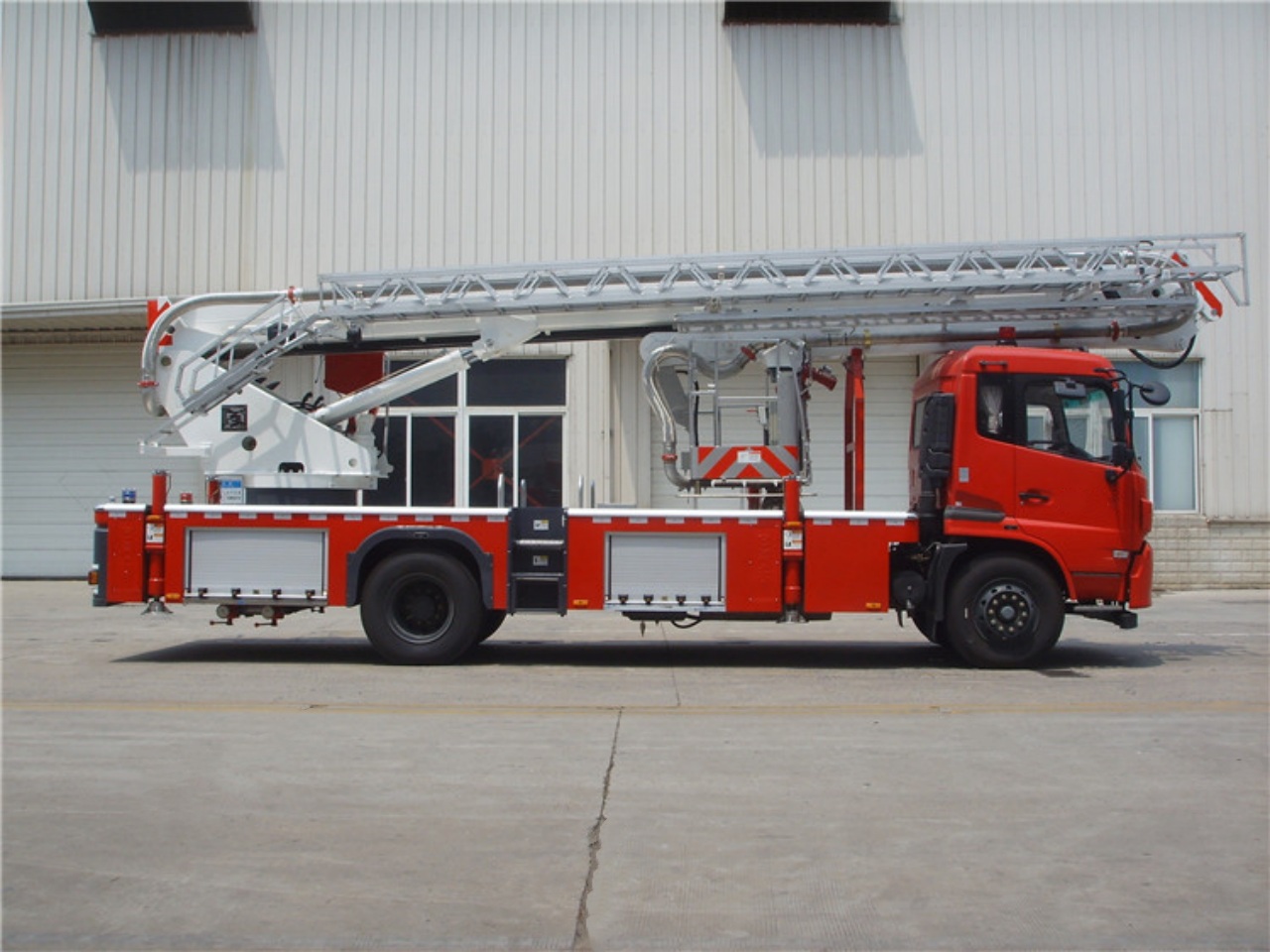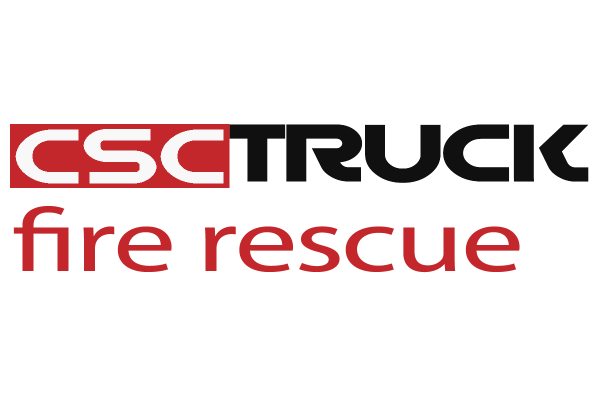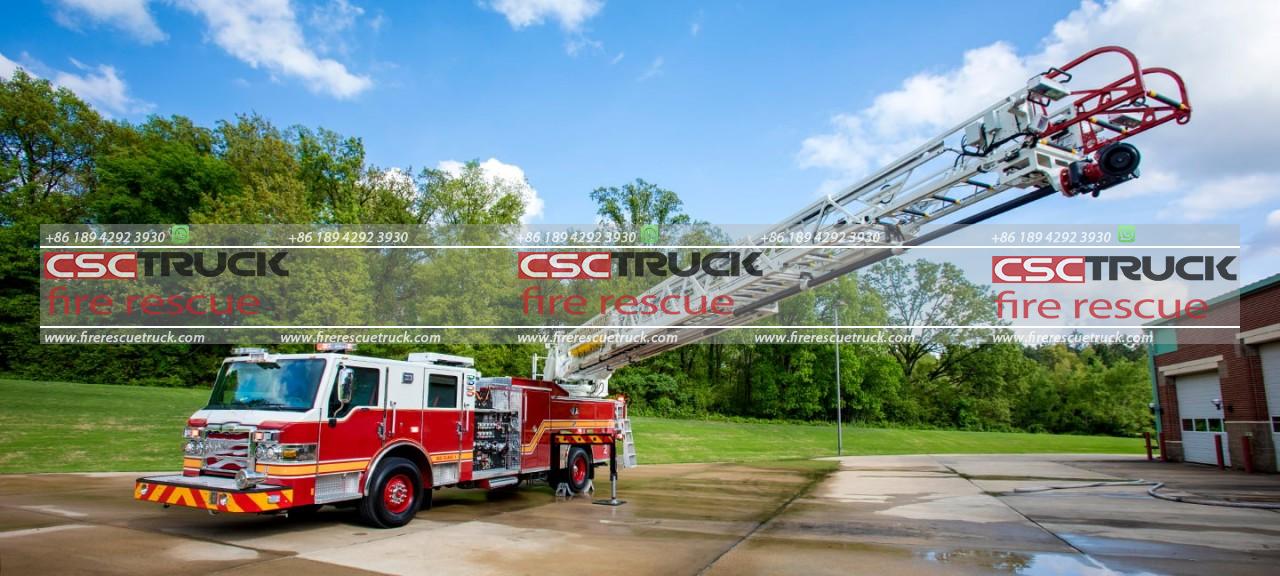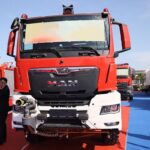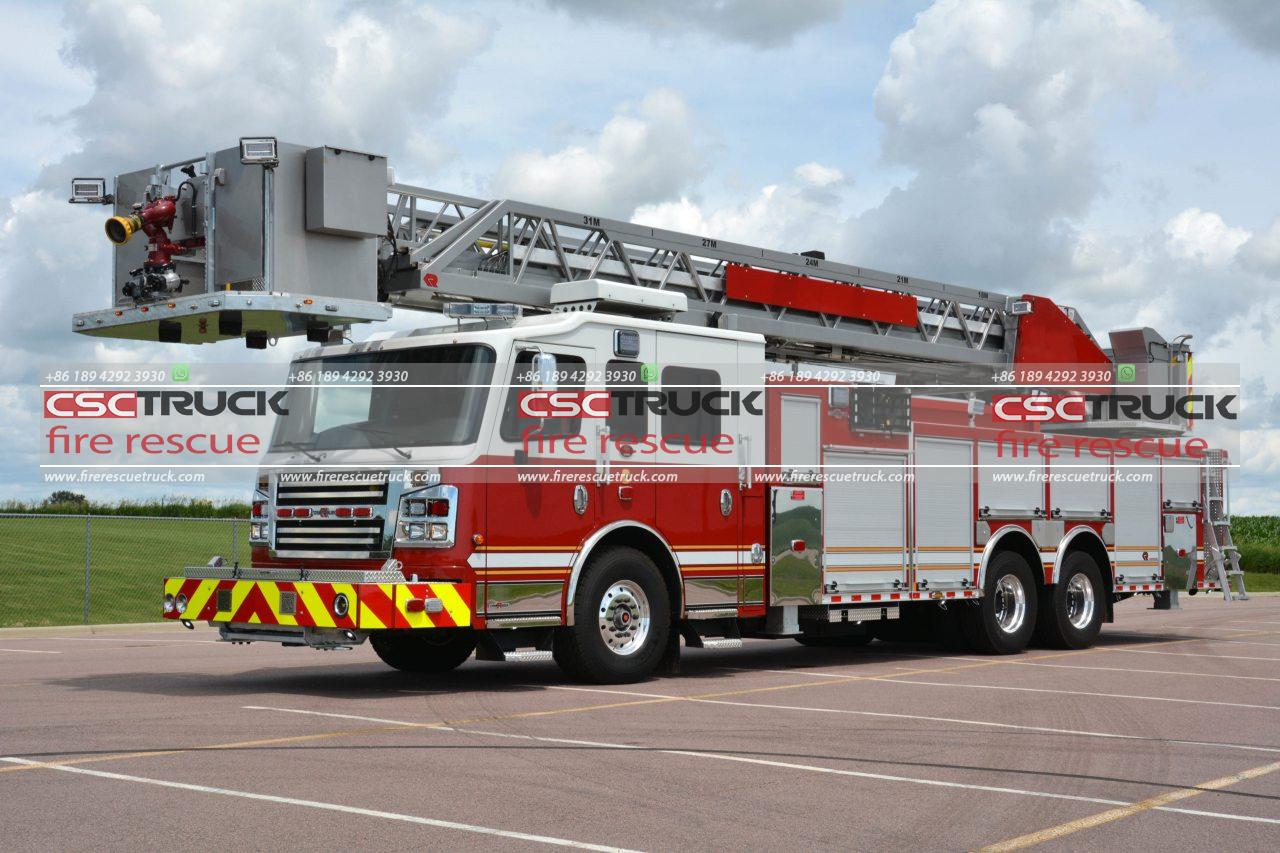Introduction
Fire trucks are essential components of any fire department, each designed with unique capabilities to handle different emergency scenarios. Among these, the aerial ladder fire truck is one of the most recognizable and vital. Designed to provide firefighters with access to high elevations, these trucks are crucial for battling fires in multi-story buildings and conducting rescues from significant heights. This article explores aerial ladder fire trucks’ purpose, components, types, and operational considerations.
Definition and Purpose
An aerial ladder fire truck, also known as a ladder truck or a hook-and-ladder truck, is a specialized firefighting apparatus equipped with an extendable ladder. Unlike standard fire engines that primarily transport water and firefighting equipment, aerial ladder trucks focus on providing vertical access for firefighting, ventilation, and rescue operations. These vehicles are indispensable in urban environments where high-rise buildings and complex structures require elevated reach capabilities.
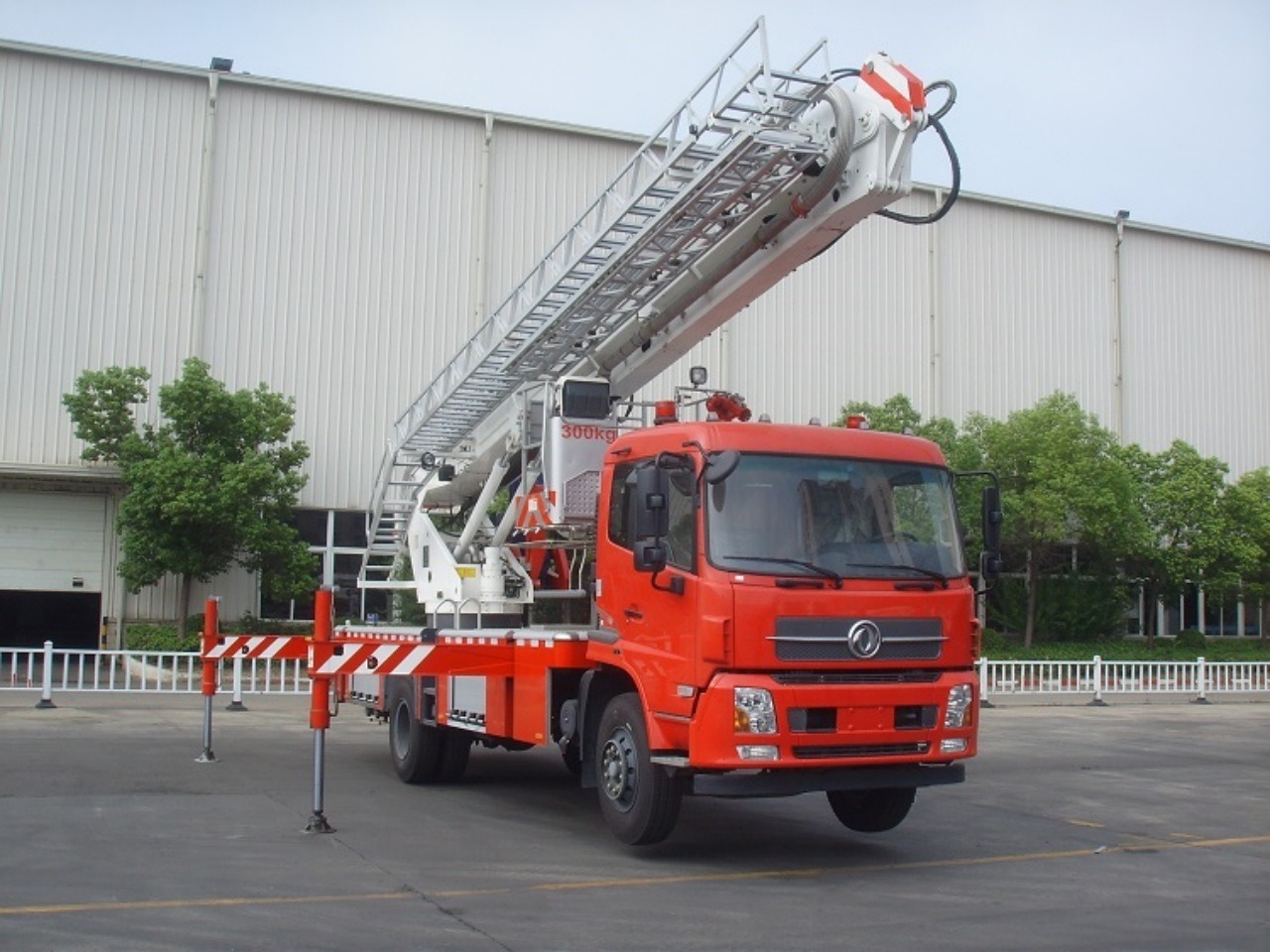
Key Components of an Aerial Ladder Fire Truck
Aerial ladder fire trucks are complex machines with various components that enhance their operational efficiency. Some of the primary components include:
- Extendable Ladder: The defining feature of the truck, this ladder is typically made of heat-resistant steel or aluminum and can extend to heights ranging from 50 to over 100 feet, depending on the model.
- Turntable: Located at the base of the ladder, the turntable allows the ladder to rotate 360 degrees, providing flexible positioning during operations.
- Hydraulic System: This system powers the ladder’s extension and rotation, ensuring smooth and precise movements.
- Stabilizers (Outriggers): These extend from the sides of the truck to provide stability and prevent tipping when the ladder is fully extended.
- Waterway System: Some aerial ladder trucks include an integrated waterway that allows for high-pressure water delivery directly through a mounted nozzle at the ladder’s tip.
- Firefighting Equipment Storage: Compartments on the truck house hoses, axes, ventilation tools, and self-contained breathing apparatus (SCBA) for firefighters.
- Rescue Equipment: Many ladder trucks carry additional equipment such as stretchers, rappelling gear, and specialized tools for extrication.
- Lighting and Communication Systems: High-intensity floodlights and communication devices enhance visibility and coordination during nighttime or low-visibility operations.
Types of Aerial Ladder Fire Trucks
There are several variations of aerial ladder fire trucks, each tailored for specific tasks and environments:
- Straight Aerial Ladder Truck: This type features a long, extendable ladder but lacks a platform at the tip. It is primarily used for firefighting and rescue in high-rise buildings.
- Tiller Truck (Tractor-Drawn Aerial, TDA): These trucks have a separate trailer section with an additional driver operating the rear wheels for superior maneuverability, making them ideal for tight urban areas.
- Aerial Platform Truck (Tower Ladder): Equipped with a bucket or platform at the ladder’s tip, this type allows for more stable positioning of firefighters and equipment at high elevations.
- Quint Fire Truck: A combination vehicle that includes an aerial ladder, pump, water tank, hose, and ground ladders, making it versatile for multiple firefighting roles.
- Articulating Boom Truck: Instead of a straight ladder, these trucks have a jointed boom that can navigate around obstacles, making them useful for complex rescues.
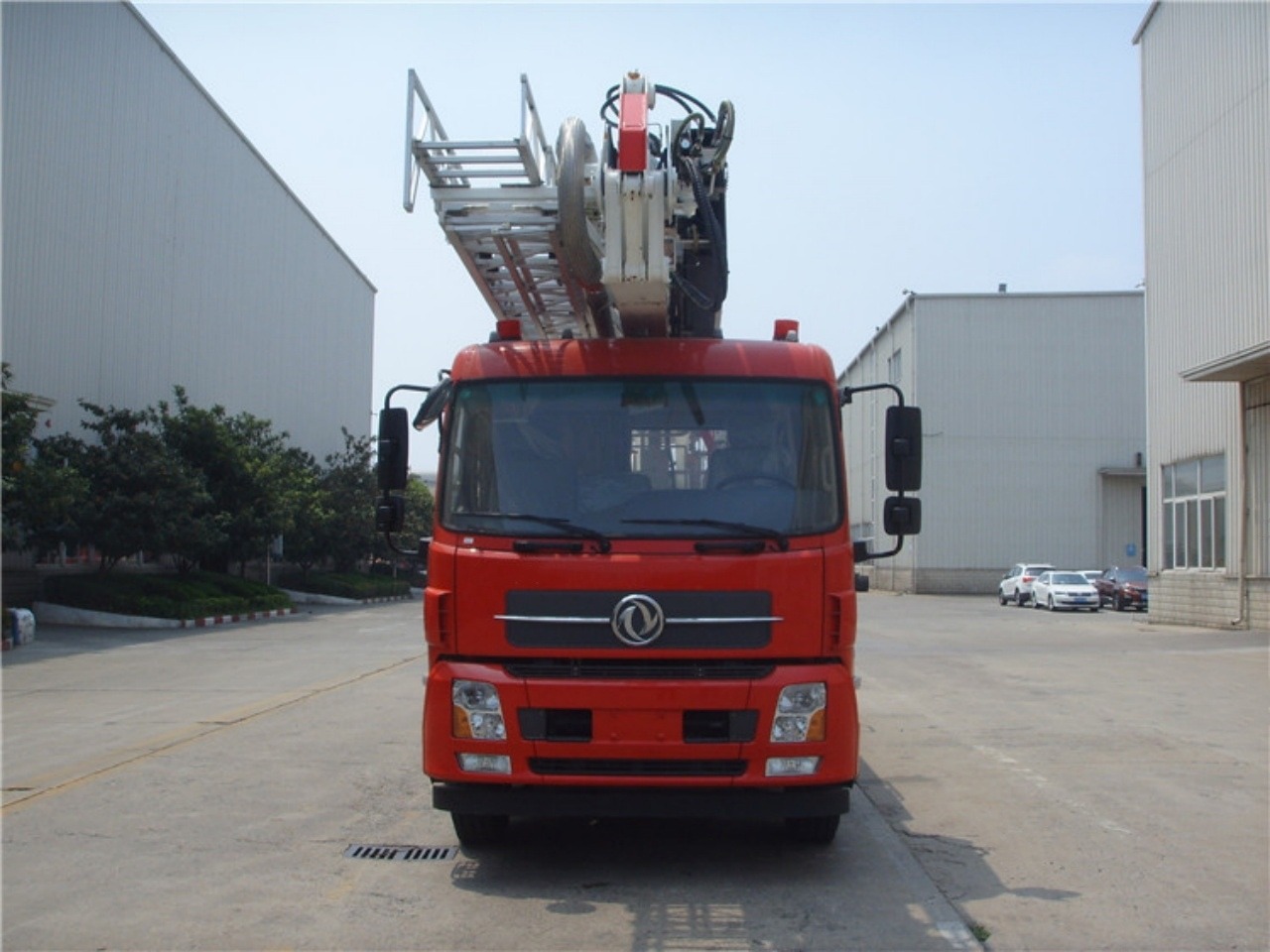
Operational Considerations
Operating an aerial ladder fire truck requires specialized training and adherence to safety protocols. Firefighters must consider various factors when deploying these vehicles:
- Positioning: Proper placement is critical to maximizing reach and operational efficiency. Trucks must be parked on stable ground with adequate clearance for ladder extension.
- Stabilization: Deploying outriggers correctly prevents accidents and ensures the truck remains stable during ladder operations.
- Weather Conditions: Wind, rain, and ice can affect ladder stability and firefighter safety. Operators must adjust tactics accordingly.
- Load Limits: The ladder has a specified weight capacity that should not be exceeded to prevent structural failure.
- Water Supply Management: Trucks with integrated water systems must ensure adequate pressure and flow rates for effective firefighting.
- Safety Protocols: Firefighters using aerial ladders must wear harnesses and follow strict communication procedures to minimize risks.
Advantages of Aerial Ladder Fire Trucks
Aerial ladder fire trucks provide several benefits in firefighting and rescue operations:
- Enhanced Reach: Enables firefighters to access upper floors and rooftops that are otherwise inaccessible.
- Versatile Fire Suppression: Integrated water delivery systems allow for effective fire suppression from above.
- Improved Rescue Capabilities: Crucial for evacuating individuals from high-rise buildings during emergencies.
- Increased Ventilation Efficiency: Allows for faster roof ventilation, improving interior conditions for firefighters and trapped occupants.
- Adaptability in Urban and Industrial Settings: Useful in congested cityscapes, industrial complexes, and large commercial structures.
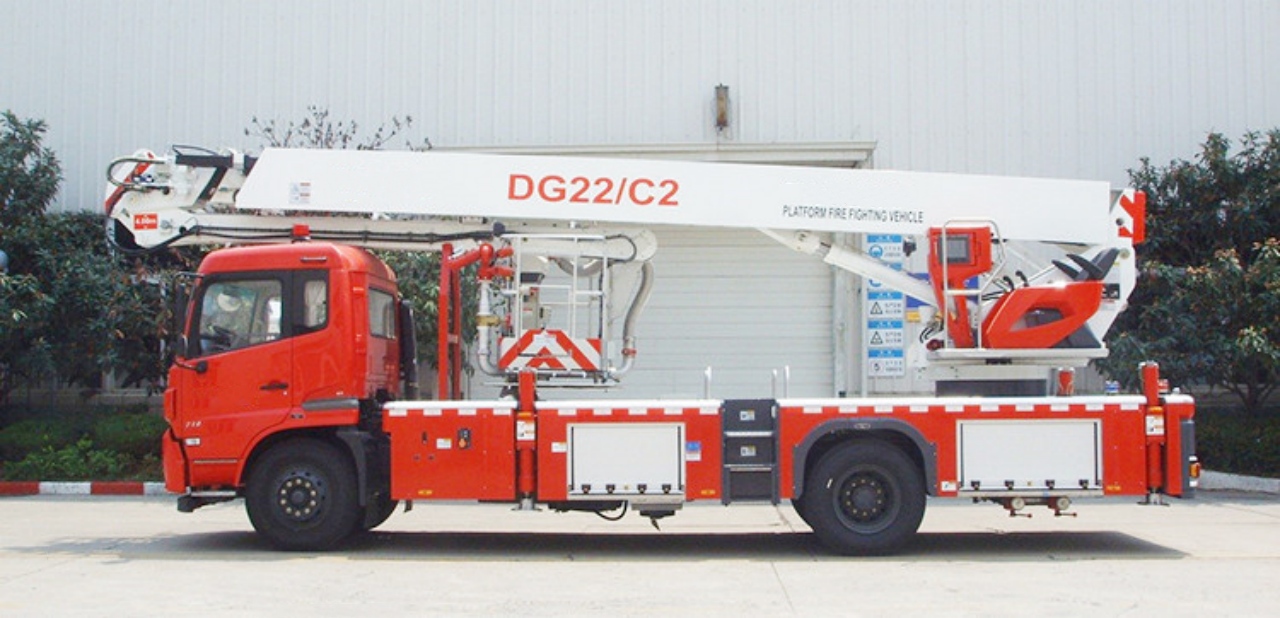
Challenges and Limitations
Despite their advantages, aerial ladder fire trucks have some limitations:
- High Cost: These trucks are expensive to purchase and maintain due to their specialized components.
- Complex Operation: Requires extensive training and experience to operate safely and effectively.
- Space Constraints: Large size and stabilization requirements can make deployment difficult in narrow streets or congested areas.
- Weather Sensitivity: Strong winds and adverse weather conditions can limit their safe usage.
- Maintenance Demands: Regular inspections and servicing are required to keep the hydraulic and mechanical systems functioning properly.
Conclusion
Aerial ladder fire trucks are indispensable assets in modern firefighting, offering crucial height access, fire suppression, and rescue capabilities. While they require significant investment and training, their benefits in saving lives and property far outweigh the challenges. Fire departments worldwide rely on these sophisticated machines to tackle high-rise fires, complex rescues, and large-scale emergencies. As firefighting technology continues to advance, aerial ladder fire trucks will likely see further improvements, enhancing their effectiveness and operational efficiency in protecting communities.
